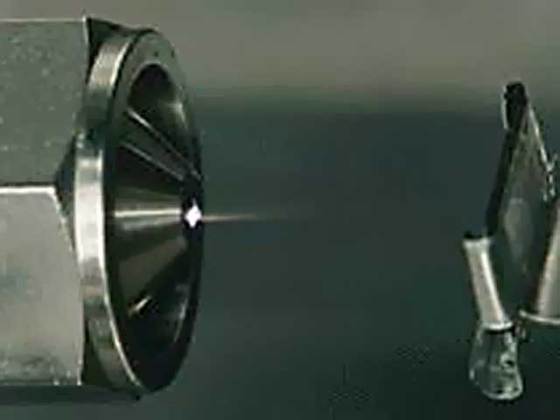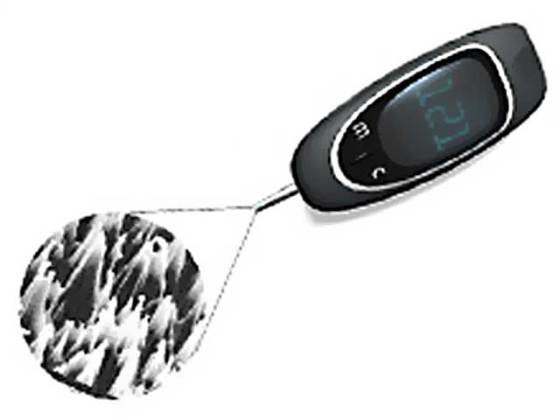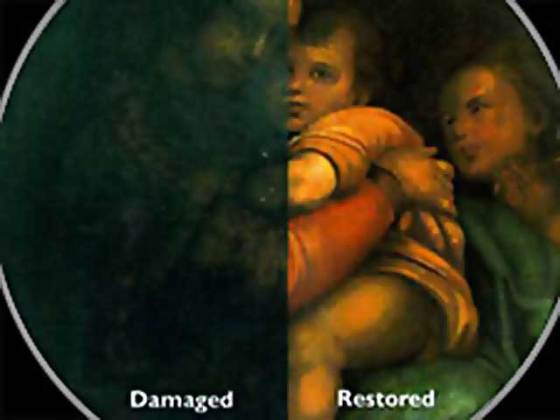NASA researchers reveal various applications of atomic oxygen
 A scientific method developed by researchers at NASA’s Glenn Research Center uses atomic oxygen to save and restore works of art that would have been irreparably damaged. It can also completely sterilize surgical implants intended for human bodies, improve glucose monitoring devices for diabetic patients, and texture the surfaces of polymers to invite bone cell adhesion, leading to a variety of medical advances.
A scientific method developed by researchers at NASA’s Glenn Research Center uses atomic oxygen to save and restore works of art that would have been irreparably damaged. It can also completely sterilize surgical implants intended for human bodies, improve glucose monitoring devices for diabetic patients, and texture the surfaces of polymers to invite bone cell adhesion, leading to a variety of medical advances.
The oxygen that we breathe is comprised of two atoms of oxygen, the ozone which occurs in Earth’s upper atmosphere is comprised of three atoms of oxygen, while a single atom of oxygen is named atomic oxygen. The folks from NASA’s Glenn Research Center were asked to investigate the damage caused to NASA spacecraft by atomic oxygen. Aside the methods used to protect spacecraft from atomic oxygen, the researchers discovered a way to harness the potentially destructive power of atomic oxygen and use it to improve life on Earth.
“In the first few shuttle flights, materials looked frosty because they were actually being eroded and textured”, said Bruce Banks, a senior physicist with Alphaport, supporting the Space Environment and Experiments branch at Glenn. “Atomic oxygen reacts with organic materials on spacecraft exteriors, gradually damaging them.”
When the solar arrays were designed for the Space Station, there was a concern that the solar array blankets, which are made of polymers, would quickly erode due to atomic oxygen. In order to counter that, the researchers created a coating of a clear silicon dioxide glass that is so thin, it is flexible. This protective coating adheres to the polymers of the array and protects the arrays from erosion, while barely sacrificing any thermal properties.
“We became aware of how the surface chemistry changes, how it [atomic oxygen] removes organic materials… it can remove anything organic that’s a hydrocarbon, that might not be easily removed by normal chemicals”, said Banks.
There are different ways of applying atomic oxygen to surfaces. Most frequently, a vacuum chamber is radiated with microwaves or radio-frequency waves in order to break the oxygen into single oxygen atoms. A sample of polymer is placed in the chamber and its erosion is measured to determine the level of atomic oxygen inside the chamber. Another method of applying atomic oxygen is to use a portable, pencil beam machine that directs a flow of atomic oxygen to a specific target. It might be possible to create a bank of these beams to cover a larger surface area.
The team discovered various other applications of atomic oxygen. They learned that it turns the surfaces of silicone into glass, which can be helpful in creating components needed to form a tight seal without sticking to each other. There are many biomedical applications of atomic oxygen. Atomic oxygen has been used to texture the surface of polymers that may fuse with bone. The surface of smooth polymers typically discourages adhesion with bone forming cells, but the atomic oxygen creates a surface where adhesion is enhanced. There are a variety of ways this could be beneficial to osteopathic health.
Atomic oxygen can also be used to remove biologically active contaminants from surgical implants. Even with modern sterilization practices, it is difficult to remove all debris from bacterial cells (called endotoxins) from the implants. The endotoxins are organic but not living, and they can cause inflammation since sterilization may not remove them. Atomic oxygen cleans the implant and removes all traces of organic materials, which greatly diminishes the risk of post-operative inflammation.
The technology is also being used for glucose sensors and other biomedical monitors. These monitors use acrylic optical fibers that are textured by atomic oxygen. This texturing allows the fiber to filter out red blood cells, letting serum in the blood more effectively contact the chemical sensing component in the monitor.
“It makes the test more accurate… while requiring a fraction of the blood that’s normally required to do blood sugar testing. You can prick almost anywhere on your body and get enough blood to register the sugar level of the blood”, said Sharon Miller, an electrical engineer in the Space Environment and Experiments Branch at NASA’s Glenn Research Center.
When works of art are compromised, atomic oxygen can be used to remove the organic contaminants without damaging the actual painting. The process removes all organic materials, such as carbon or soot, but it typically doesn’t affect the paint. The pigments in paint are mostly inorganic, and have already been oxidized, meaning that atomic oxygen doesn’t damage them. Pigments that are organic can also be preserved, through carefully timing the exposure to atomic oxygen. The canvas is also safe, as the atomic oxygen only reacts on the surface of the painting.
Artwork can be placed in a vacuum chamber where atomic oxygen is created. Depending on the amount of damage, the painting can remain in the chamber anywhere from 20 hours to 400 hours. The pencil beam can also be used to specifically target a damaged area in need of restoration, eliminating the need to place the artwork in a vacuum chamber.
Museums, galleries and churches have come to Glenn to save and restore their works of art. Glenn has demonstrated the ability to repair a fire-damaged painting by Jackson Pollack, removed lipstick from an Andy Warhol painting and saved smoke-damaged paintings at St. Stanislaus Church in Cleveland. The Glenn team has used atomic oxygen to restore a piece that was previously thought to be irreparable: a centuries-old, Italian copy of a painting by Raphael called “Madonna of the Chair”, which belongs to St. Alban’s Episcopal Church in Cleveland.
The team hopes to continue researching ways that atomic oxygen can be of use, and to further explore the promising areas that they have already identified. Many of the technologies have been patented, and the Glenn team hopes that companies will license and commercialize some of the technologies, so they may be of even more use to society.












Great research by NASA Scientists which has many applications.
Dr.A.Jagadeesh Nellore(AP),India